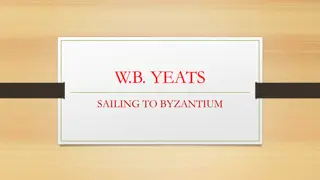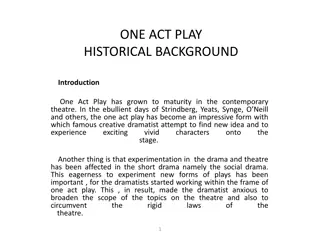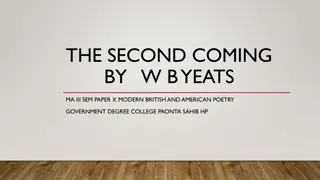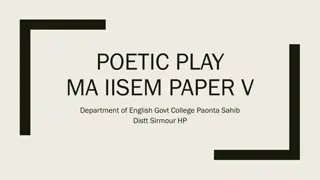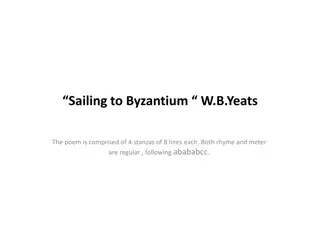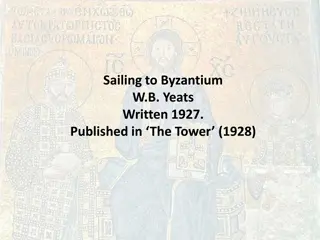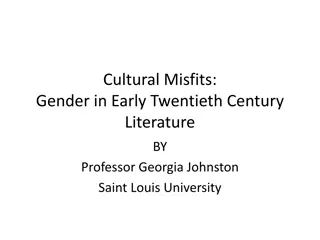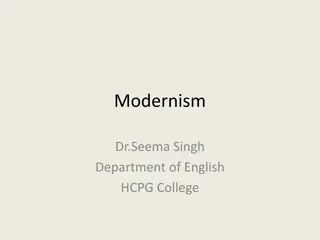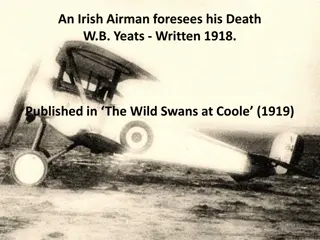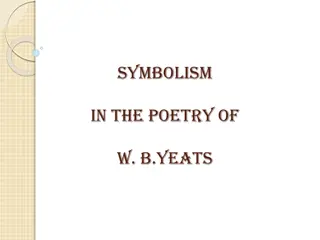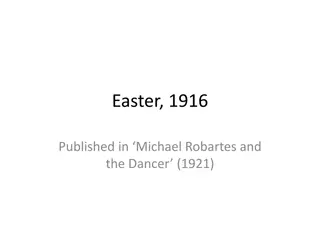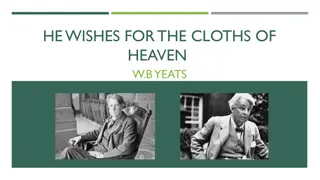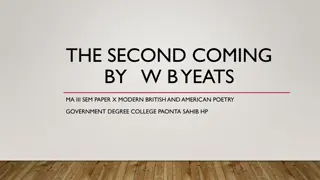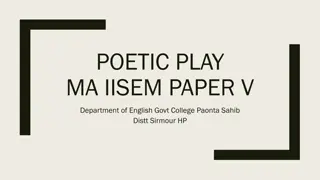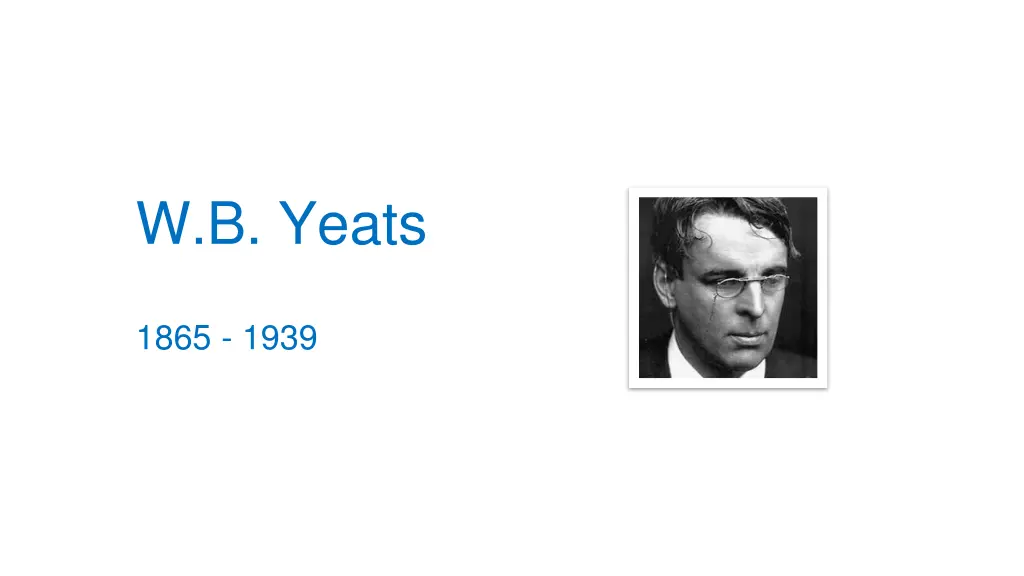
Yeats' Poem: Isle of Innisfree Analysis
Explore the themes, imagery, and mood in W.B. Yeats' poem "The Lake Isle of Innisfree." It discusses the desire for a utopian world, homesickness, and the peaceful atmosphere created by natural sounds. Dive into the poet's longing for the serene beauty of Innisfree against the backdrop of urban London.
Download Presentation

Please find below an Image/Link to download the presentation.
The content on the website is provided AS IS for your information and personal use only. It may not be sold, licensed, or shared on other websites without obtaining consent from the author. If you encounter any issues during the download, it is possible that the publisher has removed the file from their server.
You are allowed to download the files provided on this website for personal or commercial use, subject to the condition that they are used lawfully. All files are the property of their respective owners.
The content on the website is provided AS IS for your information and personal use only. It may not be sold, licensed, or shared on other websites without obtaining consent from the author.
E N D
Presentation Transcript
W.B. Yeats 1865 - 1939
A small island on Lough Gill in Co.Sligo. Yeats spent many summers in Sligo. The Lake Isle of Innisfree I will arise and go now, and go to Innisfree, And a small cabin build there, of clay and wattles made; Nine bean-rows will I have there, a hive for the honey-bee, And live alone in the bee-loud glade. And I shall have some peace there, for peace comes dropping slow, Dropping from the veils of the morning to where the cricket sings; There midnight s all a glimmer, and noon a purple glow, And evening full of the linnet s wings. I will arise and go now, for always night and day I hear lake water lapping with low sounds by the shore; While I stand on the roadway, or on the pavements grey, I hear it in the deep heart s core.
I will arise and go now, and go to Innisfree, And a small cabin build there, of clay and wattles made; Nine bean-rows will I have there, a hive for the honey-bee, And live alone in the bee-loud glade. He will go to Innisfree and live a simple life, in a small cabin. He will grow his own food and have bees and live alone with the sounds of nature.
He will find peace there. Repetition of peace for emphasis. Dropping - onomatopoeia. Soft sound creates peaceful atmosphere. And I shall have some peace there, for peace comes dropping slow, Dropping from the veils of the morning to where the cricket sings; Veils of the morning - metaphor for the fog or dew Beautiful colour. The stars glimmer and the heather is a vibrant purple colour. This is imagery. Complimented by the sound of the bird s wings. There midnight s all a glimmer, and noon a purple glow, And evening full of the linnet s wings.
I will arise and go now, for always night and day I hear lake water lapping with low sounds by the shore; While I stand on the roadway, or on the pavements grey, I hear it in the deep heart s core. When he is in London he hears Innisfree and longs to go there deep in his heart. He contrasts the grey of London with the beauty and colour of Innisfree. Alliteration l reflects the sound of the water.
Theme This poem demonstrates the universal desire to escape to a utopian world. It explores the timeless theme of the love of a place and the desire to reconnect with a place. It hints at homesickness and a deep bond with home. Sounds Sounds are natural and tranquil. They emphasise the silence of Innisfree.. They create a peaceful atmosphere. Natural sounds enhanced by alliteration and onomatopoeia. Mood and Atmosphere The atmosphere is calm and peaceful. Imagery Opening stanza images are practical. They become increasingly poetic and metaphorical to reflect the dreamlike nature of his fantasy of the place. He uses beautiful colour. Effective use of contrast to emphasise the natural beauty of Innisfree soulless roadway and pavements grey

